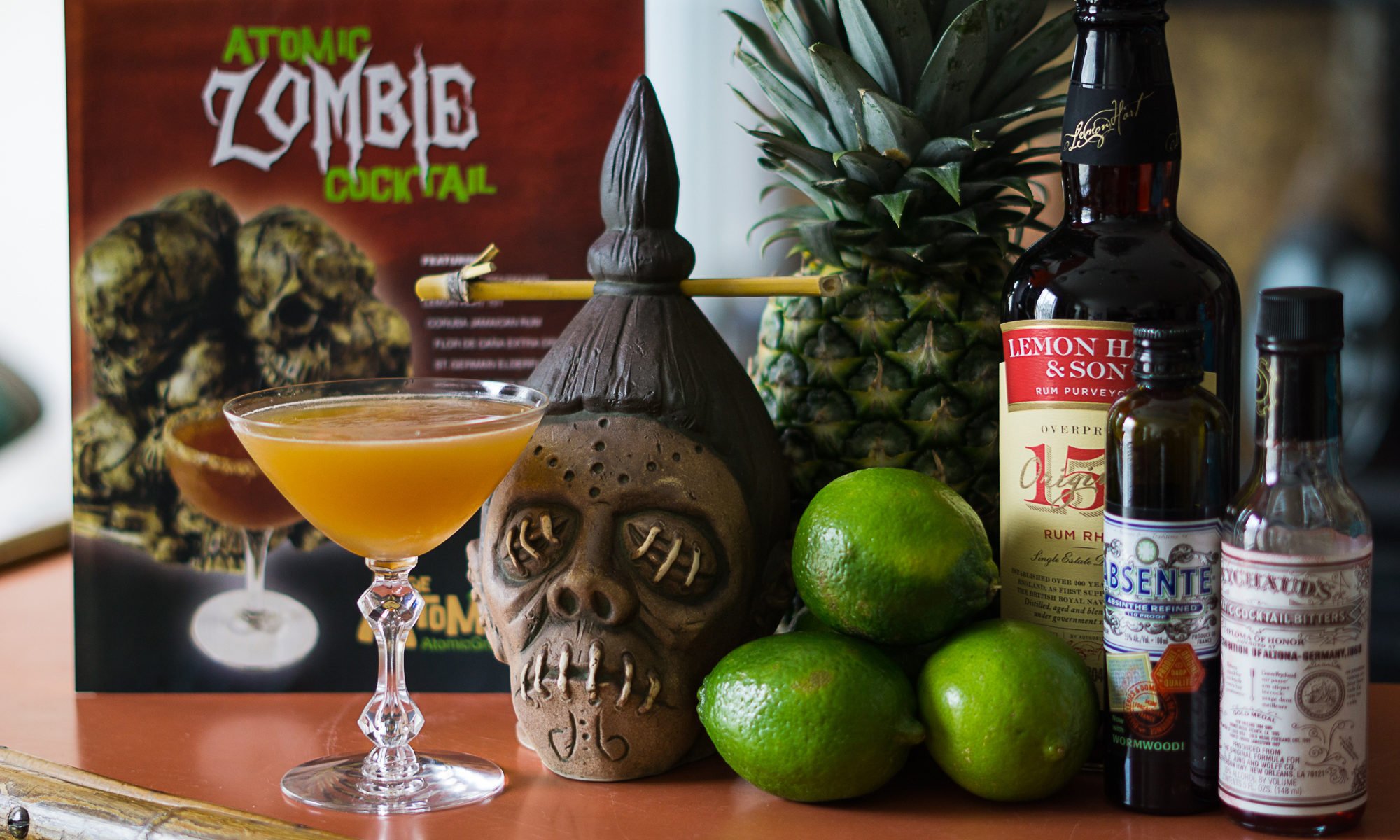Since its birth in the early 1960s, surf music seems to arrive in waves roughly every 15 years. And just as Florida surfers have played second fiddle to California, so have the Sunshine State’s surf bands. But it’s surely not due to lack of talent or effort.

As a fourth wave washes over us, music scholars are beginning to examine the history of this phenomenon that never seems to die. During the climax of an exhibit of surf culture at Florida Atlantic University in Boca Raton this month, an ethnomusicologist put Florida’s role into perspective during an hour-long lecture, “Surf Rock and the Music of the ‘Right’ Coast.”
“Surf rock isn’t just some fad that appeared and has lasted through the years,” said Dr. James E. Cunningham, an associate professor in FAU’s Department of Music. “It’s followed trends in technology throughout its existence.”
Cunningham floated his theory that surf rock’s peaks in popularity, and its so-called revivals, also coincided with breakthroughs in technology. He points to advances in surfboard technology, guitar and guitar amp technology, and even the media (radio, television, the Internet) that paralleled the music’s booms.
Cunningham spoke at FAU on May 12 during the Schmidt Center Gallery’s closing events surrounding “Surfing Florida: A Photographic History.” Featuring the works of more than 50 photographers and 100 surfers, the exhibit will travel to the Pensacola Museum of Art and run today (May 24) through Sept. 3. Surfers from that region will contribute custom surfboards to the show.

Though it’s not widely acknowledged in the mainstream, we’re currently experiencing surf rock’s fourth wave, Cunningham says. After the genre’s explosive start was doused by the British Invasion and late ’60s rock, it experienced a revival in the mid to late ’70s, just as new developments in short board technology were becoming widespread.
The third wave went viral in the late ’80s and early ’90s, propelled by the movie Pulp Fiction, the early Internet, and a rapidly increasing interest outside of the United States. Cunningham says the current flurry of activity is more of a “contemporary renaissance,” with musicians experimenting with new sounds and textures.
Cunningham has observed today’s surf bands referencing such eclectic musical styles as Hawaiian, alternative, ambient, exotica, garage, lounge, retro, reverb rock, rockabilly, spy-fi and Tiki. Their influences come from other genres, such as punk, metal and country. “I see a lot of other influences, which I find most fascinating about contemporary surf rock,” Cunningham said. “That’s probably just the tip of the iceberg.”
“People are feeling that they don’t really need to be tied to tradition in order to express themselves in this genre,” he said. In South Florida, those genre-bending sounds can be heard from Palm Beach County bands Surfer Blood and Guy Harvey, Hollywood’s Beach Day, and Miami’s Jacuzzi Boys. Those bands are part of what Cunningham calls the “indie/garage/noise-pop youth movement” in Florida surf rock. The artists come from a garage band culture that’s supported by young outdoor and music enthusiasts.

Surfer Blood, now working on its major-label debut for Warner Bros., is gaining international acclaim in the noise pop scene. The music is characterized by “poppy and hooky songs, but played at extreme volumes, which sort of negates the poppiness of it,” Cunningham said. Surfer Blood frontman J.P. Pitts was a student of Cunningham’s before dropping out of FAU, but the professor admits he’s “done very well for himself.” Though not a surf band in the strict sense, Surfer Blood features surf-oriented song themes and always talks about surfing in interviews, helping bring attention to it, Cunningham said. “Over the past three or four years, they’ve really begun to embrace that, because of where they’re from, their name, and the material they present.” Last year, the band performed at the Nike U.S. Open of Surfing.

A separate, more traditional group of surf bands has also emerged in Florida, propelled and supported by older surfers and musicians, Cunningham said. This statewide phenomenon he calls “progressive instrumental surf rock” is also connected to Tiki culture through The Hukilau and other events, he said. Bands from this sub-group include Cutback (Fort Lauderdale), The Intoxicators (Tallahassee), Gold Dust Lounge (Miami), Skinny Jimmy and the Stingrays (Deerfield Beach), Laramie Dean (Miami; now Los Angeles), The Hodaddys (St. Petersburg), Balsa Bill and the Surf Chasers (Satellite Beach), Haole Kats (Tampa; now defunct), and The Gutter Queens (Tampa; maybe defunct). Skinny Jimmy and the Stingrays will be performing on June 9 at The Atomic Grog’s “Mai-Kai Mixer” event in Fort Lauderdale. “They opened up for Dick Dale and did a great job,” Cunningham said.
One thing holding back the growth of surf rock locally, Cunningham said, is the lack of clubs that embrace the music. “There are venues scattered around, but no one place where it’s really happening,” he said. Unfortunately, that’s the same recurring problem that has hampered Florida’s original rock scene for decades. In surf rock’s early days, bands on the “left coast” (California, Washington, et al.) got an early jump on the “right coast” (Florida).
Surf rock pioneer Dick Dale honed his trademark sound at the legendary beachfront Rendezvous Ballroom in Balboa, Calif. Dale’s Let’s Go Trippin’ (1961) is widely considered the first hit surf song. Bands that specialized in two distinct variations – instrumental surf rock (The Surfaris, The Ventures) and pop/rock vocals (The Beach Boys, Jan & Dean) – quickly followed and made the genre a nationwide sensation.
In Florida, surf bands who formed in the wake of the national garage band phenomenon of the early ’60s were also spurred by the state’s growing surf scene, Cunningham said. Among these were The Dynamics (Tampa), Bobby Cash and His Surfers (Cocoa Beach), The Surfin’ Tones (Cocoa Beach), The Aerovons (Miami), and The Gents Five (South Florida). The scene was heavily supported by local radio stations such as WFLA in Tampa, and WQAM in Miami.
Cunningham specializes in Indonesian, Native American, and world popular music at FAU. But his interest in surf music goes back to his youth in the Pacific Northwest in the early ’60s, plus years living on the U.S. West Coast. When he came to FAU, he said, he immediately was attracted to Florida’s surf rock scene. The Surfing Florida exhibit provided him with an opportunity to explore “not just the music, but the culture that the music is part of. Or the music that’s part of the culture,” he said.

Cunningham said he believes surf rock is the sonic embodiment of surfing technology and electronic technology. It also precipitated the transfer of the Western icon – the rugged individualist, the loner cowboy – into the image of an adventurous surfer. “They didn’t have a horse, but they had their surfboard,” he said. “It was just them and the ocean.” This relationship was fostered by early surf music’s close association with country music (with its loud guitars and twangy texture) and Western films (with their ominous instrumental soundtracks).
The surfer as the “new cowboy” came full circle when the guitar became one of the ultimate expressions of individuality in youth culture. “A lot of early surf guitarists frequently blew up their amps because they turned them up as loud as they could, and the amps weren’t built to handle that,” Cunningham said. But just as early ’60s surfboard technology developed, so did guitar technology. “So it’s natural that the two would come together,” Cunningham said.
The groundbreaking surf rock guitarists influenced everyone who came after them. From Jimi Hendrix in the late ’60s all the way up to today, Cunningham said, rock guitarists “were heavily influenced by this music whether they know it or not.” Also still looming large is the image of the surfer as a cultural icon. “It still attracts people who don’t necessarily surf, but embrace surf culture,” he said.
Previous coverage
* Surfing exhibit closes with a splash
* Surfing rides new wave of interest thanks to FAU exhibit
* Official sites: FAU galleries | Exhibit blog | Facebook page
Related coverage
* Dick Dale’s comeback revs into overdrive with South Florida shows
* South Florida welcomes Dick Dale, but when will the Rock and Roll Hall of Fame?
* Nothing can stop surf guitar king Dick Dale




Nice piece, Hurricane!
There are definitely great surf rock things happening in Fla but this article makes it sound like it’s somehow just a southeast US thing, and it’s not – this renaissance has been happening for at least a decade in New England as well – check out nesmasurf.org.
Thanks for checking out the blog. The article was based on Dr. Cunningham’s lecture on Florida surf music, so it didn’t really touch on any of the rest of the East Coast.
But I’m sure the New England scene is very cool. It’s the real home of Dick Dale, after all.
how could you forget the hodaddys, the only international surf band out of florida today…get hip…have you ever surfed?…https://www.hodaddys.com
Sorry about the slight, you’ve been added to the story above. Dr. Cunningham admits his research on all the Florida bands is ongoing and far from complete.
He’s encouraging bands to contact him. If anyone else reads this, especially from the older scene, please let us know you’re out there.
Great things are happening on the surf rock arena in Copenhagen!
Complemented by the legendary Kodachrome film – this video shot on some the last rolls
Great article…………………There is a lot of interest in surf rock amongst the enlightened in the UK!
Very interesting. .The Gents Five went to Norland High School.(I graduated ’66 as did most of them I think). Great shows at lots of local venues like North Miami Beach Auditorium & the North Miami Armory. My first album was by Dick Dale & the Deltones. Long live Surf Music. Thanks for the article.